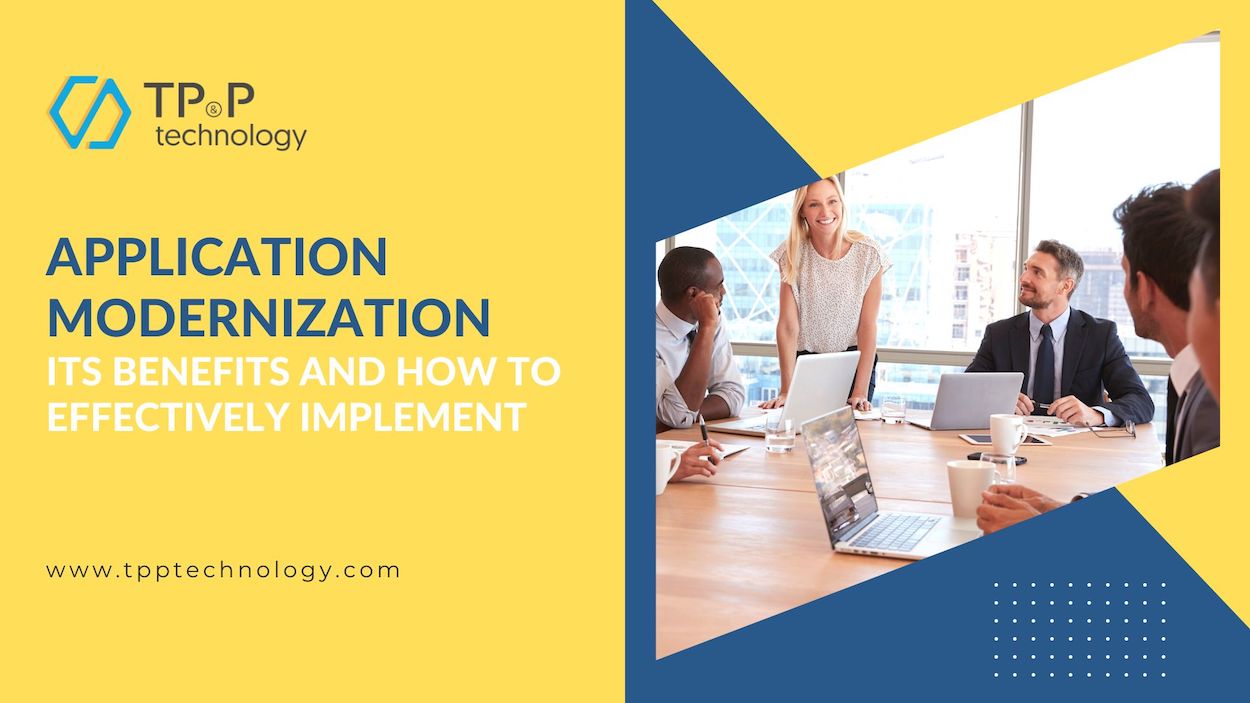
Application Modernization: Its Benefits and How To Effectively Implement?
Most organizations have started modernizing their enterprise applications to drive digital transformation initiatives. Application modernization is the procedure of taking existing legacy applications into a cloud-native architecture. What would happen if you do not skip application modernization and how businesses can modernize IT systems? Let’s find out:
The risks of not skipping application modernization
- Missing out on new features: New and valuable features are updated and added day by day. If your competitors are using software with advantages in speed, cost, efficiency, and insights, it can cause your company to fall behind.
- Missing out on new technology: The list of new frameworks and technologies, including the cloud, containers, and serverless, can increase the scalability, security, resilience, and cost-effectiveness of your applications. However, older apps may not be able to take full advantage of them or use them at all.
- Hidden costs: Most technical departments find that old applications, including those that have been completely deprecated, generate the highest number of support requests, and those requests take a long time to resolve. In doing so, they are responsible for paying for the resources committed to isolating and addressing issues as well as lost productivity. Additionally, in today's competitive talent market, many companies find it harder and harder to hire and retain IT professionals to work on legacy applications and technologies.
- Security: Older software often has security vulnerabilities, and even established software vendors must choose between updating outdated versions and developing new features. Moreover, legacy software is often inadequately prepared to handle and mitigate sophisticated modern threats. Here, the cost of delaying modernization initiatives can be tragic.
Create a modernization strategy roadmap
A technology roadmap must be implemented when your business implements new, large-scale IT solutions. Before conducting application modernization, you need a consistent methodology to guide your team's efforts. The nomenclature helps you communicate, make informed decisions, and report progress. By dismissing emotions from the decision-making process as much as possible, the journey will be smoother and more delightful.
Assess your current systems
The first step is to carefully understand the mission-critical components and functionalities of your IT system. Identifying what you have will give you ideas for the next steps. This assessment usually includes:
- Version if it is a commercial application; or a set of tools (language, open source components, etc.), if self-developed, used to develop applications
- Data environment (databases used, data models and schemas, how to protect and back them up)
- Application environment (operating system, hypervisor in case of virtualization, system software, all hardware dependencies)
Your ratings will help you make decisions: which apps to delete, which apps to recreate or refactor, and which apps to keep.
Expert guidance and tools can help speed up the assessment. For instance, an end-to-end upgrade framework can provide a concise and actionable analysis of the current state of applications.
Define your goals for application modernization
A technology strategy consists of several key elements. Depending on your industry, target market, and other variables, you can determine your overall goals, break them down into smaller milestones, identify potential roadblocks, and assign specific tasks to team members. Besides, you also define what the outcome is: what does success look like? How do they contribute to your IT and business goals? And when do you want it to be done?
For instance, if your aim is to boost your personnel management software, you might think about the ways application modernization can decrease time spent filling out time reports or doing administrative activities. Additionally, you also reduce the time required to assign team members with the right talents to a new project. Remember, while your application modernization strategy must solve IT system matters, it also needs to give you an advantage over your rivals.
Create a proof of concept
A proof of concept (POC) aims to prove the viability of an idea for a project or potential product. It's an approach that is used in companies to evaluate practicability before moving forward with production. There's nothing like doing it to test an idea. A proof of concept helps your team learn "how to" cloud migration and apps modernization and informs and strengthens your plan.
It's good practice to consider your PoC as a “throwaway”. In your lessons, they will learn their true values as well as upgrade their standards. As your team gains more knowledge and becomes more experienced, they can apply their learning and standards to all their solutions, including PoC.
The most challenging question is where to start. You may decide to implement your application modernization project at once or optimize your tech stack over time. Most organizations start with low-risk, low-complexity applications that can be modified. You should also keep in mind that making gradual modifications is usually the suggested approach, as it allows for quicker testing and iteration, shorter software release cycles, and continuous improvement.
Determine the total value of the ownership (TCO)
The total cost of ownership (TCO) is the purchase price of an asset plus the costs of operation. To assist in decision-making, you need to conduct a total cost of ownership (TCO) analysis to ensure that your costs and your cost goals - are known and that simply continuing the modernization path will maintain your costs on track.
In particular, when you move applications to the cloud, cost management changes dramatically: from a model centered on capital expenditures and depreciation to a model centered on subscriptions and operational costs. This gap can complicate your financial analysis - how do you measure savings?
Implement the roadmap
Communication between and among your teams will be essential as you carry out the modernization plan. Consider your plan as a live, evolving one that would adapt to changes in your business plans, as well as the lessons and opportunities provided by new technologies. Using scorecards as a proven method of tracking progress against goals set at the strategic development stage.



